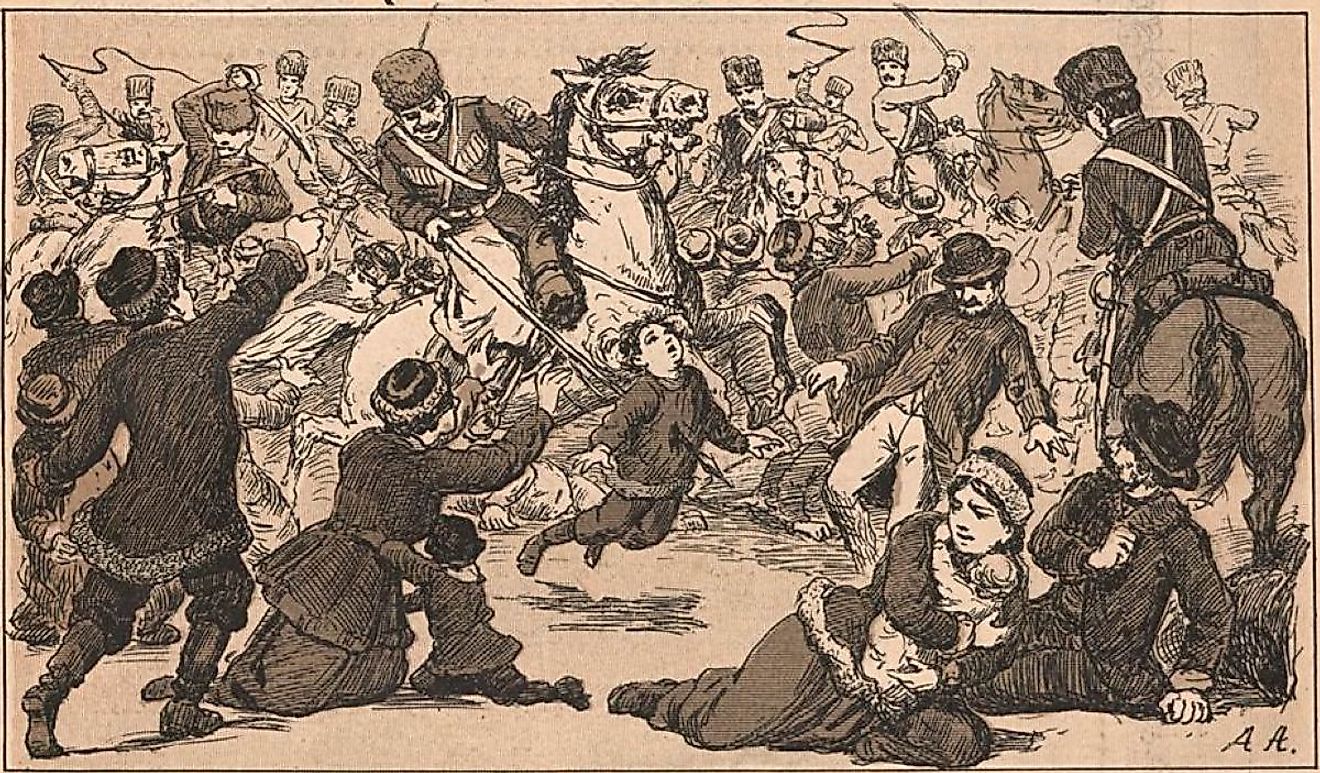Failed Sea Expeditions

- Sir John Franklin, Sir John Cabot, and the Count of Lapérouse all led seafaring expeditions that went awry, resulting in their disappearance.
- The USS Jeannette left San Francisco in 1879 to discover the North Pole and got caught in the ice on the way there.
- Many failed sea expeditions were embarked upon in the name of discovering the Northwest Passage.
The sea has forever beckoned for people to cross it in the name of finding something new. During the Age of Exploration from the 15th century through the 17th century, European powers started sailing around the world in search of new trade routes. Many hoped that new routes would bring them additional knowledge and other advantages that would lead to great wealth. This did eventually happen for some explorers and the realms they were representing, but not without encountering some major bumps in the road, or rather, on the waves, along the way.
Heading out on the open sea hundreds of years ago truly was a gamble. You were navigating by the stars and by compass alone, relying only on the wind and hoping the food you packed would keep you healthy enough until you reached the next shore. These explorers did not have a map of the world to go by—they were creating the maps. And sometimes this led to some problems. Here are four famous sea expeditions that did not go as planned.
4. Franklin’s Lost Expedition

In many failed sea expeditions, the captain comes back to the mainland to admit defeat. And all is well. That didn’t happen with the expedition led by Sir John Franklin. Franklin and his crew left England in 1845 aboard the HMS Erebus and the HMS Terror hoping to discover the Northwest Passage. This passage was something that various countries had been in search of for years. Seafarers were looking for a route that would pass through Canada's Arctic seas, connecting the Atlantic Ocean to the Pacific.
As the story goes, the Erebus and Terror were seen in Canadian waters near Baffin Island about two months after first setting sail. After this, they disappeared and none of the crew was ever seen again.
Historians have guessed over the years about what happened. Some say the ships became stuck in the ice and the crew eventually starved to death. Others hypothesize that some of the explorers went forth on land, and eventually joined Indigenous communities to survive, where they lived out their lives far from home.
Amazingly, in 2014, the Erebus was discovered in the Canadian arctic by a search team. Two years following this, the Terror was located. The shipwrecks provided some clues, what exactly happened to the crew still remains a mystery that we may never know the answer to.
3. John Cabot and the Northwest Passage

Everyone wanted to be the first to discover the Northwest Passage. Sir John Cabot, (who was actually an Italian named Giovanni Caboto), was another explorer attempting to be the first. Cabot tried his hand at locating the passage long before Franklin did. Cabot set sail to find the Northwest Passage three times, first in 1497 from Bristol, England. This time, he and his crew made it to Canada and found the coasts of Newfoundland and Labrador.
Cabot was the first European to reach Canada since the Norse explorers did so around 1000 CE. Cabot sailed back to England after noting that the waters he had found near what would become Canada, were full of cod. He then attempted to locate the fabled passage once again in 1498, and never came back. Historians believe Cabot and his crew died in a serious storm on the North Atlantic ocean, but no one knows the real truth.
2. The Jeannette Expedition

The USS Jeannette was going to make the US the first country to ever reach the North Pole. The boat set sail from San Francisco in 1879 with 20 crewmen on board fueled with dreams that could reach as high as the sails, and beyond. Unfortunately, the ship and its occupants never made it. This expedition got caught in the ice close to the New Siberia Islands and sank to the bottom of the ocean. Miraculously, 13 men from the expedition survived.
1. Lapérouse Expedition

In 1785, the King of France, King Louis XVI chose the Count of Lapérouse to lead a multifaceted sea expedition. The King wanted Lapérouse to gather information and survey the North and South Pacific Ocean, as well as the Indian Ocean. The King said he wanted to learn about the climates, plants and animals, and Indigenous peoples of places far-flung. Moreover, however, he wanted to learn about what the other European powers were doing in these faraway places.
Lapérouse ventured as far as Siberia, Korea, California and Alaska. He and his crew had been at sea for about three years when he learned the British were planning to set themselves up at Australia’s Botany Bay. The team sailed there to investigate, and took note of what was happening, in January of 1788. Lapérouse and his crew left Botany Bay in March of 1788 but were never heard from again.











